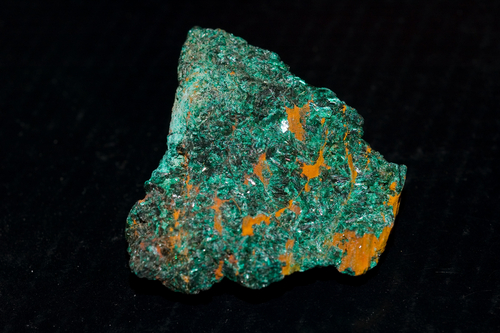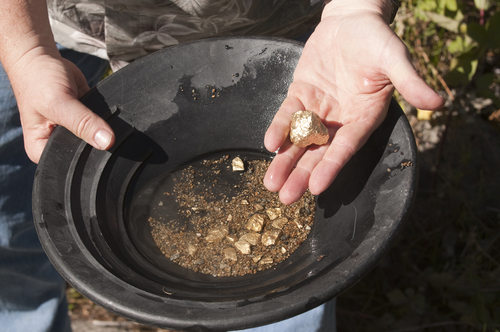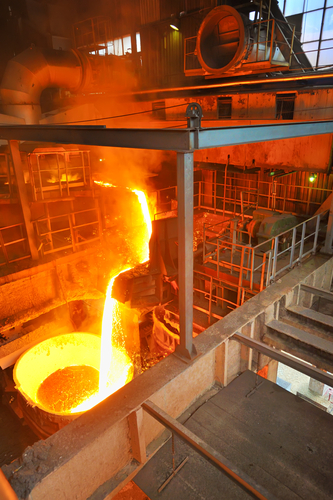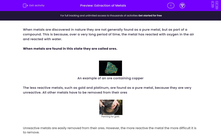When metals are discovered in nature they are not generally found as pure metals, but as part of a compound. This is because, over a very long period of time, the metal has reacted with oxygen in the air and reacted with water.
When metals are found in this state they are called ores.

An example of an ore containing copper
The less reactive metals, such as gold and platinum, are found as a pure metal, because they are very unreactive. All other metals have to be removed from their ores.

Unreactive metals are easily removed from their ores. However, the more reactive the metal the more difficult it is to remove.
Shown below is a table showing the process that needs be undertaken to remove metals from their ores:
| METAL | PROCESS | REACTIVITY |
|---|---|---|
| Potassium | Extracted from ores by electrolysis |
Most Reactive
Least Reactive |
| Sodium | ||
| Lithium | ||
| Calcium | ||
| Magnesium | ||
| Aluminium | ||
| (Carbon) | ||
| Zinc | Extracted by heating with carbon | |
| Iron | ||
| Tin | ||
| Lead | ||
| Copper | ||
| Silver | Extracted using heat alone | |
| Gold |
The unreactive metals are removed from their ores simply by heating.
Metals such as zinc, iron, nickel, tin, lead and copper need to be heated with carbon to extract them.
The more reactive metals require electrolysis (a technique involving electricity) to achieve this.
Iron is often found in its ore (haematite) as iron oxide. The iron is extracted in a blast furnace, like the one below. The iron is displaced from iron oxide using carbon in the blast furnace.

Let's find out more about metals and their extraction.








